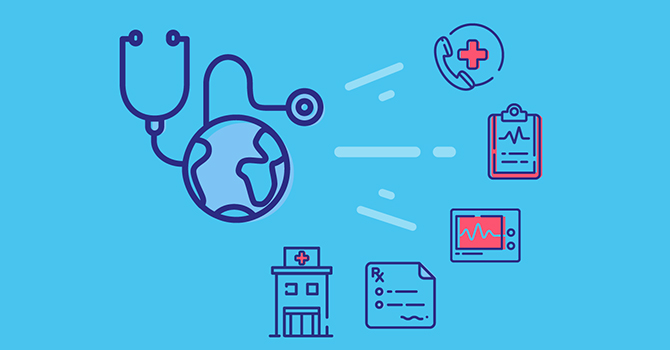Healthcare RCM: Optimize Revenue Cycle Management for Better Results
Healthcare RCM: Optimize Revenue Cycle Management for Better Results
Blog Article
A Comprehensive Overview on How Health Care RCM Functions to Improve Billing and Collections
Navigating the complexities of healthcare profits cycle management (RCM) is critical for service providers intending to enhance their invoicing and collections processes. The overview unpacks the ins and outs of RCM, from individual enrollment to accounts receivable management, using insights right into enhancing each action.
Understanding Income Cycle Monitoring
RCM is an important management feature that incorporates the whole financial process of client treatment, from the preliminary appointment establishing to the last settlement of the equilibrium. It is a complicated procedure designed to identify, accumulate, and manage the income from the services given to individuals.
The RCM process begins when a patient timetables an appointment and extends with the client's treatment journey, consisting of invoicing and collections. A vital purpose is to decrease the time between receiving and providing a service settlement, hence boosting the organization's monetary health. RCM entails different features such as client registration, insurance confirmation, fee capture, coding, asserts submission, payment publishing, and dealing with charms and rejections.
Trick Components of RCM
In the realm of Profits Cycle Management (RCM), recognizing its essential parts is essential to achieving monetary performance within healthcare organizations. RCM is a comprehensive process that incorporates numerous stages, each important to making sure reliable billing and collections. The key elements include person registration, insurance coverage confirmation, cost capture, coding, claim submission, repayment posting, and accounts receivable monitoring.


When coded, claims are submitted to payers, where accuracy is critical to prevent rejections or delays - Healthcare RCM. Settlement uploading involves tape-recording the obtained payments, which permits the reconciliation of accounts. Lastly, accounts receivable management concentrates on monitoring and dealing with unsettled insurance claims, making sure timely follow-up and resolution
Each part of RCM is interconnected, and ineffectiveness in any type of part can disrupt the whole cycle. As a result, grasping these aspects is crucial for medical care companies to optimize revenue and boost their monetary health.
Approaches for Efficient Invoicing

Standardizing billing treatments across the organization is one more key method. Developing clear guidelines for documentation, coding, and entry assists maintain uniformity and compliance with regulatory requirements. Educating personnel on a regular basis on these procedures ensures everybody is updated with the most up to date changes in payment codes and payer plans.
Exact charge capture is important in preventing earnings leak. Applying normal audits and monitoring systems permits for the identification and modification of disparities before they affect earnings. Furthermore, preserving open lines of communication with payers aids to rapidly deal with any conflicts or misunderstandings that might emerge.

Finally, interesting individuals early in the invoicing process by providing clear quotes and instructional materials about their monetary responsibilities can substantially decrease confusion and boost payment timeliness. These methods collectively add to a more reliable and economically healthy and balanced invoicing system.
Enhancing Collections Procedures
Offered the complexities of medical billing and the range of payer needs, enhancing the collections process involves implementing strategic steps that make sure accurate and timely payment of services rendered. Automation tools can help in tracking insurance claim conditions, sending prompt tips to people, and taking care of rejections a lot more effectively.
Transparent and clear the original source patient interactions are essential. Offering thorough descriptions of charges and providing versatile payment strategies can enhance individual satisfaction and timely settlements.
Normal audits of the collections procedure ought to be performed to determine locations for enhancement and guarantee conformity with policies. By assessing data, medical care organizations can recognize trends, prepare for potential issues, and adjust techniques accordingly (Healthcare RCM). Inevitably, a well-enhanced collections procedure not only sustains monetary health and wellness yet also adds to an extra seamless experience for people and personnel alike
Optimizing Earnings Streams
Building upon the structure of a strong collections procedure, medical care organizations can better reinforce their financial security by purposefully maximizing profits streams. This entails a multi-faceted strategy, beginning with an extensive evaluation of existing income sources to recognize inefficiencies and locations for growth. Employing sophisticated information analytics tools allows companies to obtain understandings right into payer mix, patient demographics, and solution usage patterns, permitting data-driven decisions that boost revenue capture.
Implementing automated billing systems can dramatically minimize errors and quicken insurance claims processing, guaranteeing that revenue is collected extra successfully. Additionally, optimizing payer contracts via regular arrangements can enhance compensation prices and terms, straight impacting the lower line. Expanding solution offerings, such as incorporating telehealth or wellness programs, can additionally attract a broader patient base, hence raising profits possibility.
One more critical element is improving patient engagement and complete satisfaction, as completely satisfied clients are a lot more most likely to adhere to therapy strategies and make prompt repayments. Using adaptable payment alternatives and transparent payment methods can enhance collections and foster person navigate to these guys loyalty. Healthcare RCM. By adopting these techniques, healthcare companies can develop a more resilient economic framework, making sure continual development and stability in an ever-changing imp source sector landscape
Verdict
Finally, medical care Earnings Cycle Administration (RCM) plays an important function in optimizing invoicing and collections procedures by incorporating crucial components such as individual registration, insurance verification, fee capture, coding, asserts entry, and balance due administration. By using advanced modern technology, standardizing treatments, and promoting person involvement, health care service providers can significantly reduce case rejections, speed up payment cycles, and enhance capital. This thorough method to RCM inevitably leads to boosted monetary efficiency and sustainability for healthcare organizations.
The RCM procedure begins when a client routines a consultation and expands with the individual's treatment trip, consisting of invoicing and collections.Another important element is improving person involvement and complete satisfaction, as satisfied patients are much more likely to adhere to treatment strategies and make timely payments. Providing versatile payment alternatives and clear payment practices can boost collections and foster individual commitment.In verdict, healthcare Revenue Cycle Monitoring (RCM) plays a vital function in optimizing billing and collections processes by integrating crucial parts such as patient enrollment, insurance coverage confirmation, charge capture, coding, asserts entry, and accounts receivable monitoring. By utilizing advanced innovation, standardizing procedures, and fostering patient engagement, healthcare carriers can substantially decrease insurance claim denials, speed up payment cycles, and enhance cash circulation.
Report this page